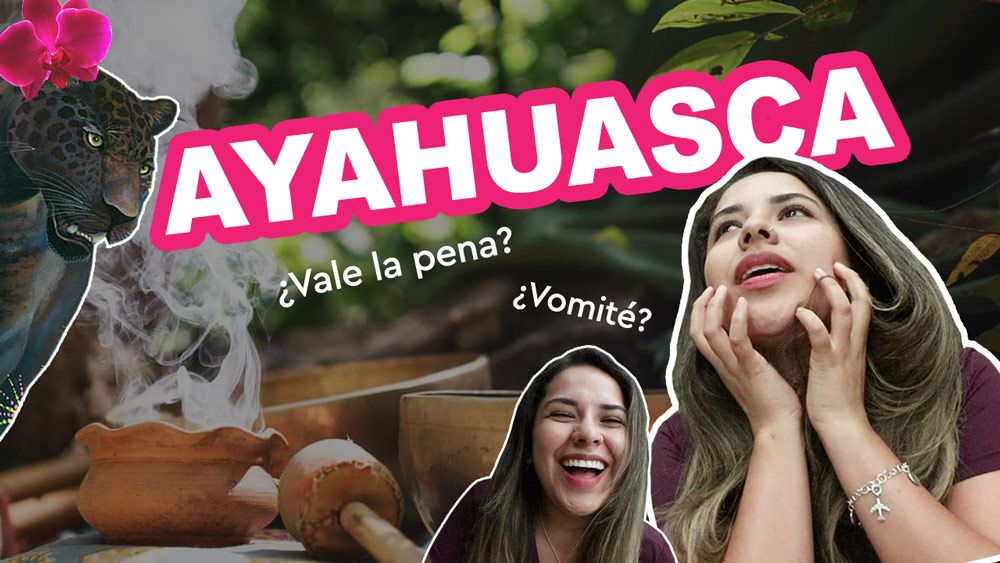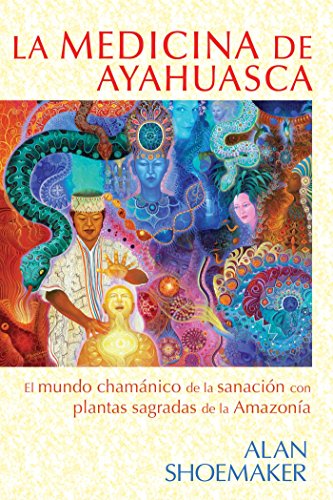Welcome to Ayahuasca Experience, your sanctuary of transformation. In this enlightening article, we delve into the heart of the Amazon to explore the profound Mai Niti Ayahuasca ceremonies, a path to deep healing and self-discovery. Join us on this sacred journey.
Experience Transformation: Embracing Healing with Mai Niti Ayahuasca Retreats
Embarking on a journey with Mai Niti Ayahuasca Retreats offers a unique opportunity for deep personal transformation and healing. Nestled in the heart of the Amazon, participants immerse themselves in the sacred traditions of Ayahuasca, guided by the wisdom of indigenous shamans.
At Mai Niti, the focus is on creating a safe and nurturing environment where individuals are supported throughout their healing process. The retreats offer a holistic approach, integrating traditional plant medicine with therapeutic practices to facilitate physical, emotional, and spiritual well-being.
The transformative power of Ayahuasca lies in its potential to unlock subconscious realms, allowing individuals to confront and release inner traumas, fears, and blockages. As participants connect with the plant spirit, they often report profound insights and a renewed sense of clarity and purpose.
Mai Niti’s commitment to authentic shamanic practices ensures that the Ayahuasca ceremonies are conducted with respect and honor for the cultural heritage from which this powerful medicine originates. Each ceremony is an invitation to journey inward, to peel away the layers of the ego, and to reconnect with one’s true self.
Participants are encouraged to engage in complementary activities such as yoga, meditation, and nature walks, which enhance the Ayahuasca experience and promote overall health. Furthermore, sharing circles post-ceremony provide a space for reflection and community, fostering a sense of connection and mutual support among attendees.
Choosing Mai Niti Ayahuasca Retreats is a step towards embracing a path of self-discovery and healing, in harmony with the natural world and the ancient wisdom of the Amazonian peoples.
Ayahuasca Integration – A guide for the modern mind
Dennis McKenna: Deceptive Psychedelics, Consciousness
What is the meaning of Mai Niti?
Mai Niti is a term often encountered in the context of Ayahuasca Retreat and Healing, especially in areas where the Shipibo language and culture are influential, such as in the Peruvian Amazon. The Shipibo people are indigenous to the Peruvian Amazon and have a rich tradition of plant medicine and shamanic healing.
In the Shipibo language, «Mai» translates to «Mother,» and «Niti» can be understood as «Plant» or «Medicine.» Combined, Mai Niti could be interpreted as «Mother Plant» or «Mother Medicine.» This term encapsulates the respect and reverence that the Shipibo healers, or curanderos, have for ayahuasca, often considering it as a nurturing, maternal spirit that provides healing and guidance.
Ayahuasca retreats named Mai Niti would likely emphasize the nurturing and healing aspects of the ayahuasca experience, positioning the retreat as a place where participants can connect with the ‘motherly’ wisdom and medicinal properties of the ayahuasca brew under the guidance of experienced practitioners.
What is the religious origin of ayahuasca?
Ayahuasca originates from the indigenous peoples of the Amazon basin. It has been a central element of shamanistic rituals in countries such as Peru, Brazil, Colombia, and Ecuador for centuries. The brew made from the Banisteriopsis caapi vine and other plant ingredients like Psychotria viridis or Diplopterys cabrerana contains dimethyltryptamine (DMT), which is a potent psychedelic compound.
The exact religious origins are not attributed to any single tribe or culture, as ayahuasca has been used by various indigenous groups each with their own set of spiritual beliefs and practices. Its use is deeply connected to the cosmology and traditional healing practices of these people, allowing shamans to heal, divine, and communicate with ancestral spirits.
In the context of retreats and healing, modern ayahuasca practices have been influenced by a synthesis of indigenous traditions, mestizo shamanism, as well as syncretic religious movements such as Santo Daime and União do Vegetal (UDV). These movements have combined Catholicism with indigenous and African animist beliefs, incorporating ayahuasca as a sacrament to facilitate spiritual experiences and personal growth.
Many people seeking healing and insight participate in ayahuasca retreats with the hope of experiencing a profound spiritual awakening or as a form of alternative therapy to address personal or psychological issues. While the retreats offer an environment designed to assist with deep introspection and healing, it’s important to approach them with respect for the cultural origins and the powerful nature of the ayahuasca experience.
Does ayahuasca alter you?
Yes, ayahuasca can profoundly alter your state of consciousness. During an ayahuasca ceremony, the potent brew, which is made from the Banisteriopsis caapi vine and usually the Psychotria viridis leaf, triggers intense psychedelic experiences that can last several hours. The active compound in ayahuasca is DMT (dimethyltryptamine), a powerful hallucinogenic chemical.
The alterations experienced can be both psychological and physiological. Psychologically, participants often report deep spiritual revelations, vivid visions, insight into personal issues or life questions, and a sense of interconnectedness with the universe. It’s not uncommon for individuals to experience intense emotions, both positive and negative, and some may confront challenging aspects of their personality or past.
Physiologically, ayahuasca can lead to varied physical responses, such as nausea, vomiting (often referred to as purging), diarrhea, increased heart rate, and blood pressure changes. These are considered part of the cleansing process in many traditional contexts.
It’s important to note that while many people report transformative and healing experiences, ayahuasca is not a cure-all and should be approached with respect and ideally under the guidance of an experienced facilitator or shaman. Additionally, the long-term effects of ayahuasca use are still being studied, but some evidence suggests that it may have therapeutic benefits for certain mental health conditions when used responsibly and in a supportive setting.
Safety is a critical concern, so those considering an ayahuasca retreat should thoroughly research the retreat center, the facilitators’ credentials, and prepare mentally and physically for the experience. Medical screening is essential to avoid potential negative interactions with other substances or pre-existing health conditions.
In conclusion, ayahuasca has the potential to induce significant changes in consciousness, offering opportunities for deep healing and self-discovery, but it also poses risks and should be approached with caution and informed preparation.
What occurs during an ayahuasca retreat?
During an ayahuasca retreat, participants embark on a journey of deep personal introspection, spiritual exploration, and emotional cleansing. The experience is grounded in the use of ayahuasca, a powerful psychoactive brew traditionally made from the Banisteriopsis caapi vine and the Psychotria viridis leaf.
A typical retreat will follow a structured schedule, often lasting between one week and ten days, where multiple ayahuasca ceremonies are conducted under the guidance of experienced shamans or facilitators. Here’s an outline of what occurs:
1. Preparation: Before arriving at the retreat, participants are usually advised to follow a special diet, avoiding certain foods, drugs, and alcohol to prepare their bodies for the ayahuasca experience. This also includes setting intentions and mentally preparing for the journey ahead.
2. Arrival and Orientation: Upon arrival, there is usually an orientation session where participants meet the facilitators and fellow attendees, learn about the ceremonial process, the effects of ayahuasca, and safety protocols.
3. Ceremonies: Ayahuasca ceremonies typically occur at night and can last several hours. Participants drink the ayahuasca brew and then sit or lie down in a quiet, controlled environment. The shaman or facilitator leads the ceremony, often with traditional songs called icaros, which are believed to direct the healing power of the plant.
4. The Experience: After consuming ayahuasca, individuals go through an intense period of altered states of consciousness that can involve visionary experiences, introspective journeys, and a range of emotions. Many report confronting personal traumas, receiving spiritual insights, or having profound realizations about their lives.
5. Integration: The days following the ceremonies are just as important as the ceremonies themselves. Retreats typically provide integration sessions where participants can process their experiences, often through group sharing, one-on-one counseling with facilitators, or other therapeutic activities.
6. Additional Healing Practices: Besides the ceremonies, many retreats offer supplementary healing practices such as yoga, meditation, nature excursions, and workshops that support the ayahuasca journey and promote overall well-being.
7. Post-Retreat: Returning to everyday life can be challenging after the depth of experiences at an ayahuasca retreat. Facilities may offer post-retreat support or advice on continuing the integration process at home.
It is crucial to note that ayahuasca is not a «cure» but a tool for psychological and spiritual growth. The ayahuasca experience can be profoundly transformative, but it requires a substantial commitment to self-work during and after the retreat. Participants are encouraged to approach the experience with respect, openness, and a willingness to face potentially difficult aspects of their psyche.
Frequent Questions
What are the core healing practices integrated at Mai Niti Ayahuasca Retreat?
At Mai Niti Ayahuasca Retreat, the core healing practices include: traditional Ayahuasca ceremonies, guided by skilled shamans, medicinal plant diets to cleanse and strengthen the body, personalized healing sessions, and integration support to help guests process their experiences.
How does Mai Niti ensure the safety and well-being of participants during Ayahuasca ceremonies?
Mai Niti prioritizes participant safety by employing experienced shamans to lead Ayahuasca ceremonies, ensuring medical screenings before participation, maintaining a supportive environment, and providing constant supervision throughout the experience to rapidly address any physical or psychological distress.
Can you describe the traditional shamanic guidance provided at Mai Niti Ayahuasca Retreat?
At Mai Niti Ayahuasca Retreat, traditional shamanic guidance is integral to the healing experience. Participants receive personalized attention from experienced shamans, who lead ceremonial Ayahuasca sessions infused with indigenous wisdom. Shamans offer spiritual insights and support, facilitating a deeper connection with oneself and the natural world for profound emotional and psychological healing.
In conclusion, the journey through an Ayahuasca Retreat at Mai Niti stands as a transformative experience that has the potential to unlock profound spiritual healing and personal insight. The fusion of traditional practices with supportive community can serve as a powerful catalyst for those seeking to reconcile with their inner world and embrace a path of growth and enlightenment. It’s essential for participants to approach these retreats with respect, openness, and a readiness to face the healing process that Ayahuasca can initiate. Whether you are at a crossroads in life, looking to deepen your spiritual connections, or simply searching for a greater understanding of yourself, Mai Niti offers a sacred space to explore the depths of your being with the guidance and wisdom of the Ayahuasca tradition. Remember to carry the lessons and insights back into your daily life, integrating them to foster lasting change and wellness. The journey with Ayahuasca does not end with the retreat; it is a lifelong process of learning, healing, and growing.






